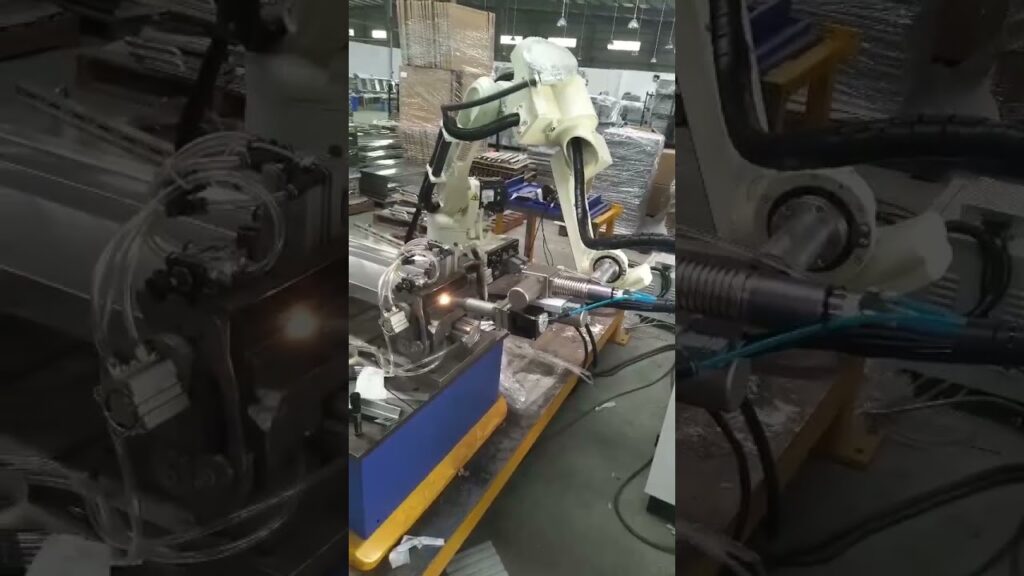The Rapid Advancement of Industrial Robotics: Transforming Manufacturing
Technology has long been the driving force behind globalization and innovation, and as the world evolves, so too does our reliance on machinery and automation. One of the most remarkable advancements in recent years has been in industrial robotics, particularly in the field of manufacturing. These technological marvels have revolutionized the manufacturing process, increasing efficiency and productivity while reducing costs and human error.
Industrial robots, often equipped with cutting-edge technology and state-of-the-art features, have become vital assets for companies across various industries. With their ability to perform repetitive tasks with precision and speed, they have truly transformed the landscape of modern manufacturing. Among the most sought-after robots in the market, the Kawasaki robotic welding arm stands out as a prime example of advanced robotics for manufacturing institutions.
The industrial robot market has witnessed a significant price drop over the years, making these machines more accessible to a wider range of manufacturers. Factors such as increased competition, improved technology, and economies of scale have all contributed to this trend. According to recent research, the average price of an industrial robot in 2010 was around $160,000. However, by 2020, this price had dropped to an estimated $25,000, marking a substantial decrease.
This decline in price has opened up a world of opportunities for small and medium-sized enterprises (SMEs). In the past, these businesses often struggled to invest in robotics due to budget constraints. Today, with more affordable options available, SMEs can harness the power of industrial robots to optimize their production processes and compete with larger players in the market.
Take, for example, the case of an automotive parts manufacturer. Traditionally, the company relied on human labor for the welding process, which was both time-consuming and prone to errors. Recognizing the need for automation, the customer decided to invest in a Kawasaki robotic welding arm. This decision not only resulted in a significant increase in productivity but also improved the overall quality of the products. The ability of the robot to perform repetitive tasks without fatigue ensured consistent welds, meeting the stringent standards required in the automotive industry. With the help of the robot, the company was able to increase output by 30% while achieving a higher level of customer satisfaction.
The success stories surrounding industrial robotics are plentiful, and experts predict that this trend will continue in the coming years. As technology advances further, robotics will become even more sophisticated, enabling manufacturers to achieve new levels of efficiency and customization. The integration of robotics and artificial intelligence (AI) is already paving the way for more intelligent and adaptive machines that can learn from experience and adapt to changing circumstances.
However, it is essential to address some of the challenges that come with this rapid advancement. One concern often raised is the potential loss of jobs due to automation. While it is true that certain manual tasks will be replaced by robots, studies suggest that the overall impact on employment is positive. The introduction of robots into a manufacturing facility brings about new job opportunities, such as technicians and engineers specializing in robotics maintenance and programming. Additionally, with increased productivity and cost savings, companies can reinvest in growth and expansion, ultimately creating more jobs.
Moreover, the benefits of industrial robots extend beyond economic considerations. These machines also contribute to a safer working environment by undertaking hazardous tasks that would otherwise put human workers at risk. With their precision and accuracy, robots can handle tasks involving toxic chemicals, extreme temperatures, and heavy lifting, reducing the incidence of workplace accidents and injuries.
In conclusion, industrial robotics has experienced remarkable progress in recent years, revolutionizing the manufacturing sector. With the decline in prices and the increasing accessibility of advanced robotic solutions such as the Kawasaki robotic welding arm, more companies are embracing automation to optimize their production processes. While concerns about job displacement exist, studies indicate that the overall impact on employment is positive. The future of industrial robotics is bright, with further advancements expected to enhance efficiency, productivity, and safety in manufacturing. It is an exciting time for the industry as we witness the transformative power of robots shaping the future of manufacturing.
Industrial Robot
"Unveiling the Cost of Advanced Industrial Robotic Arms: Exploring Kawasaki's Robotic Welding Arm & High-tech Automation in Manufacturing"


